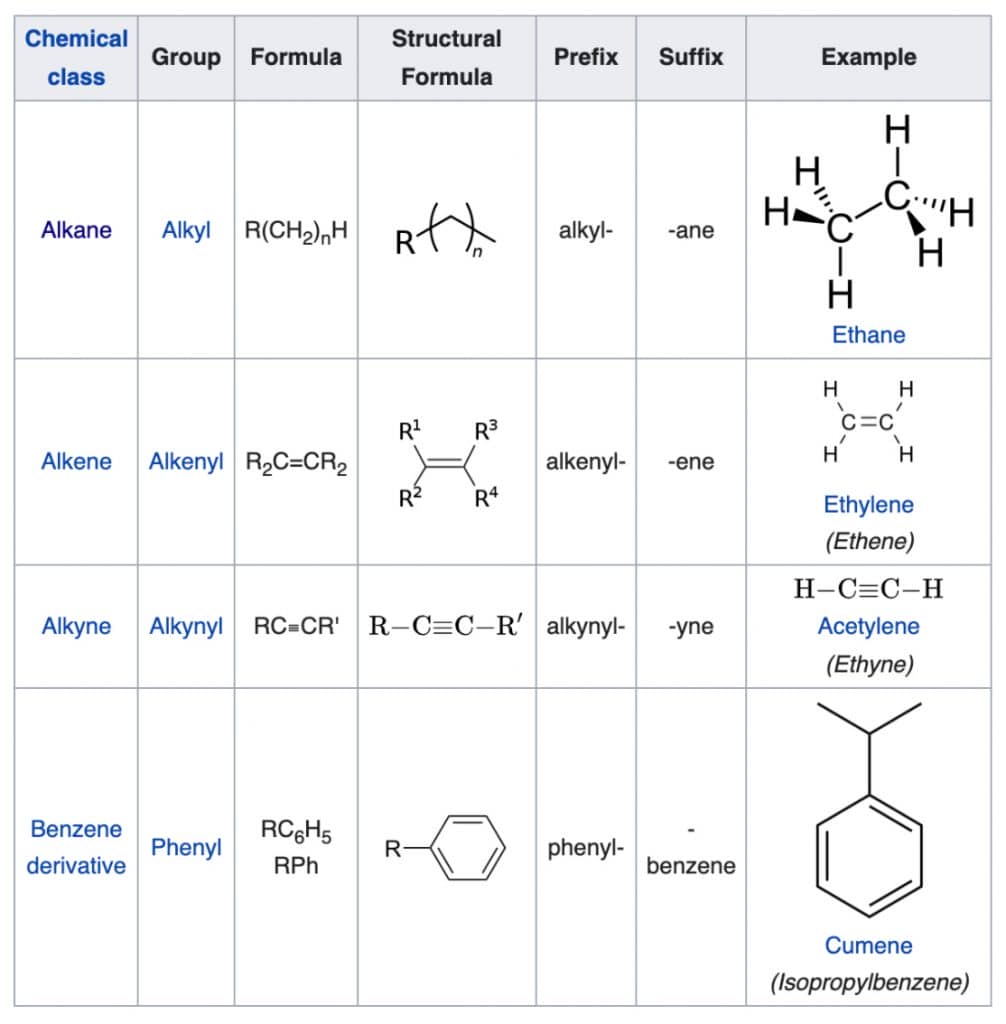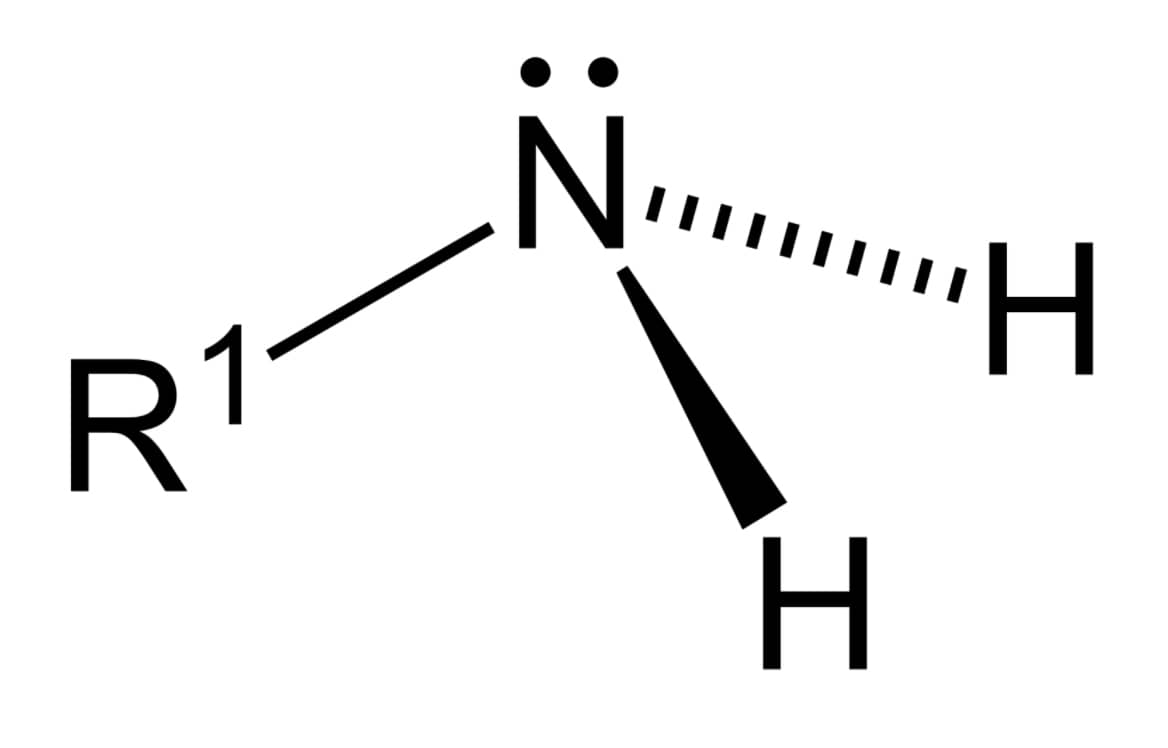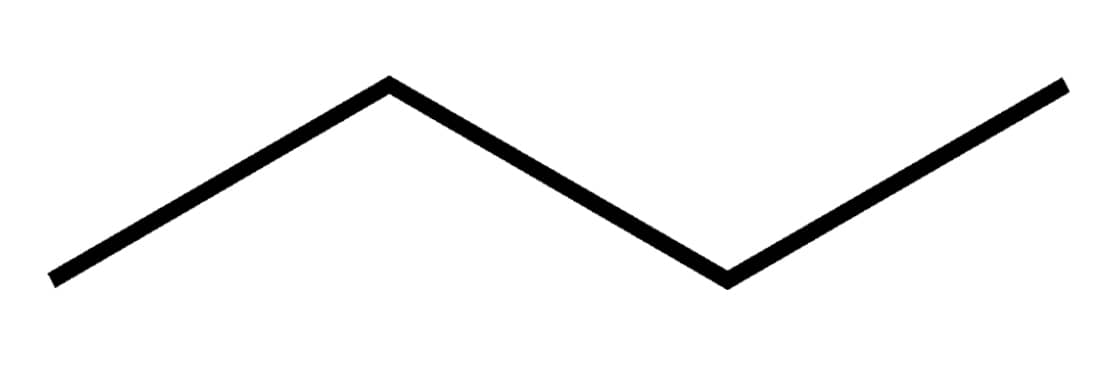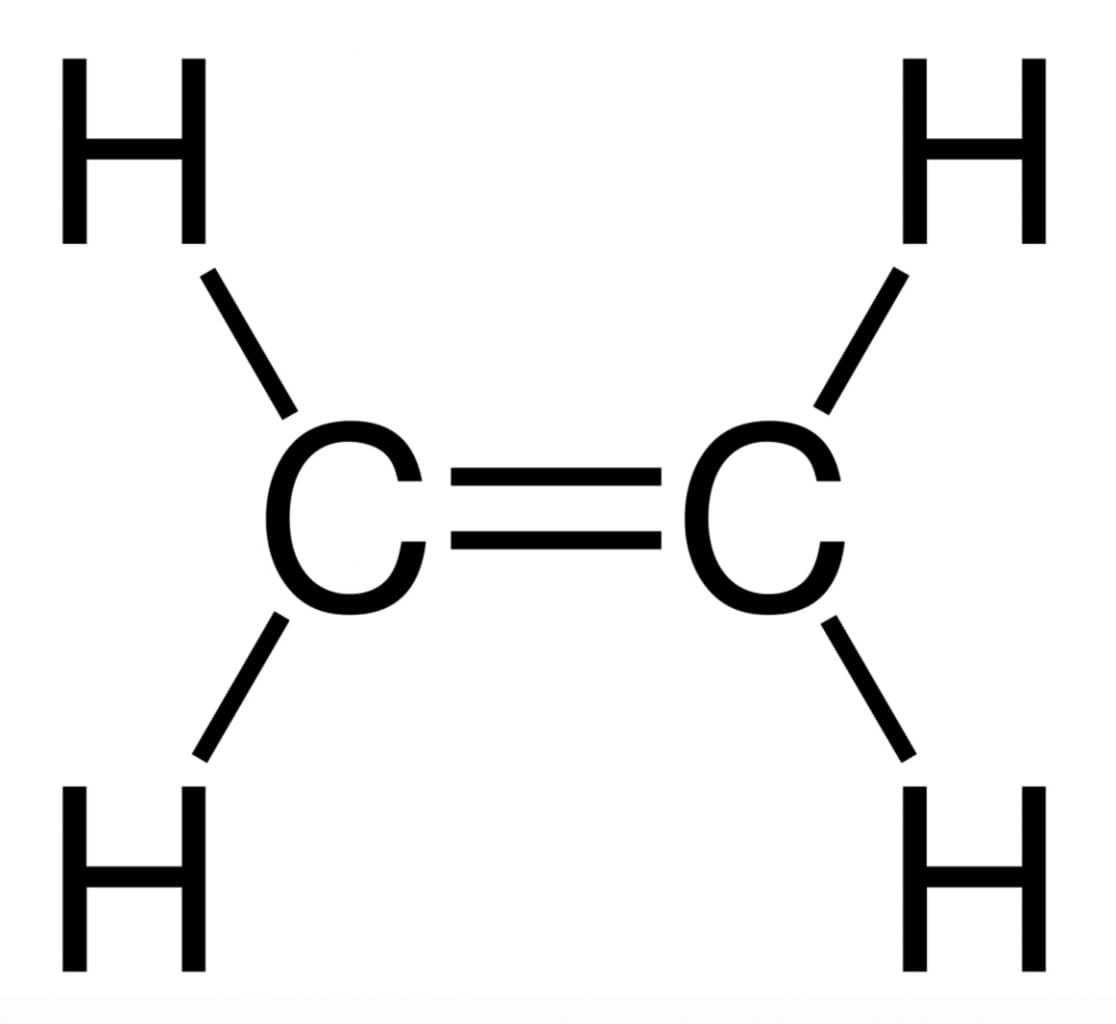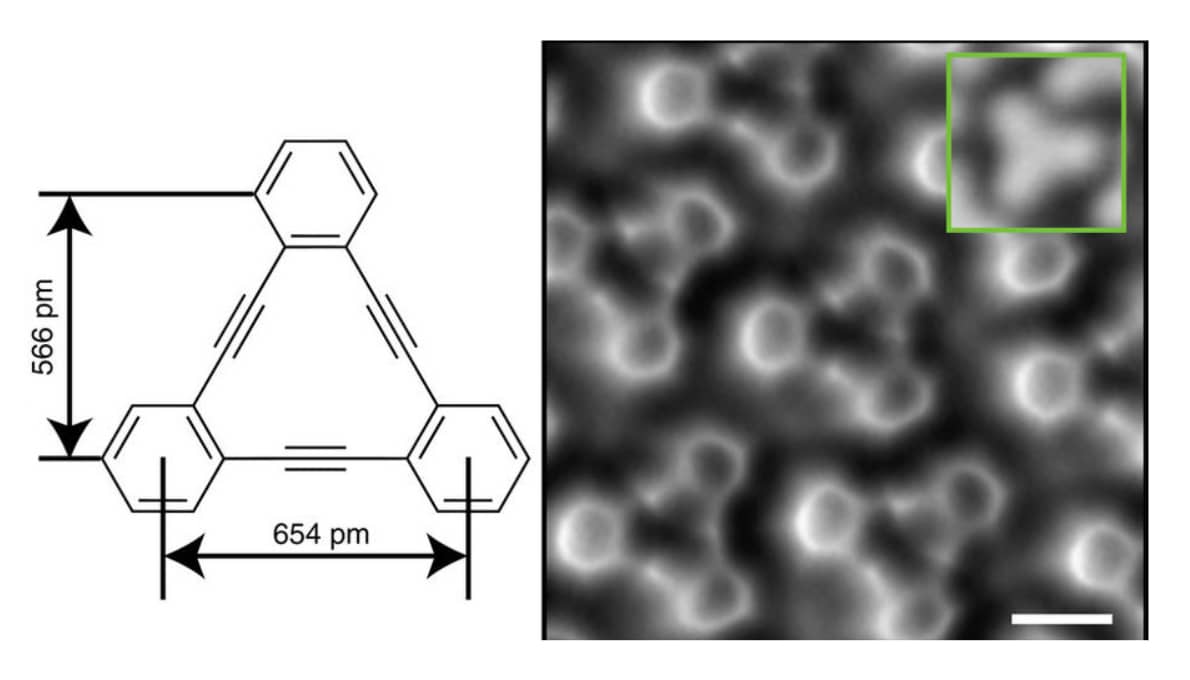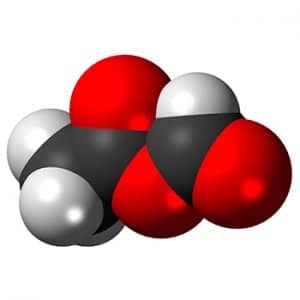
After all, so many people claim to have the “best” way.
But what if using flash cards or spaced-repetition software just doesn’t work for you?
How are you going to pass your exams?
How will you ever excel in your future career?
The answer is simple:
If you can’t master remembering functional groups, you’re going to miss out on the future in organic chemistry you deserve.
So if the “best” ways others have been teaching you aren’t working out for you, give the strategies on this page a try.
How to Memorize Functional Groups
From my perspective as a memory expert, you first need to divide the kinds of information you’re dealing with and understand how they’re different.
That way, you can develop strategies for memorizing those different parts and bring everything together in a holistic way.
The categories you’re dealing with here include:
- Words
- Individual letters
- Numbers
- Symbols
- Formulas
- Groupings that contain all of the above
It’s a lot, but we can break it down and before you know it, you’ll be able to rapidly remember everything.
Step One: Learn To Memorize Chemistry Terms
Before worrying about memorizing things like c double bond o, you need to be able to memorize words. That way, you will know the name of each chemical class.
One of the fastest ways to memorize words is through association. Using associations and a Memory Palace is the easiest way to accomplish this goal at scale.
Before we get into some examples, have a look at this list of hydrocarbyls from Wikipedia’s list of functional groups:
I suggest creating a Memory Palace exclusively for memorizing these hydrocarbyls:
- Alkane
- Alkene
- Alkyne
- Benzene derivative
You can start by mentally placing the association on a wall in your Memory Palace for each of them.

For example, using the link and story methods inside the Memory Palace, having Weird Al swordfighting Michal McKean allows me to memorize alkane and alkene in one fell swoop.
The strategy I used is to simply look at how the words sound and attach them to famous people with an object and an action that makes everything memorable. The association is placed in a mental recreation of a room I’m familiar with.
Give it a try. Create associations for each chemical class in the group and place it in a building for that group. Then, when you use your mind’s eye to go through the Memory Palace, just ask yourself: “What was happening there?”
If you need more help with the word memorization part of this strategy, here’s a full tutorial on how to memorize vocabulary.
Step Two: Learn to Memorize Letters
You will need to remember a lot of letters.
For example, when you’re learning primary animes, you’ll come across this:
How do you remember the R, N, H and H?
For this purpose, the pegword method is going to come in very handy.
Basically, it lets you instantly think of an image for each letter of the alphabet.
That way, instead of a hard to remember display of images, you can put something like this in a Memory Palace:
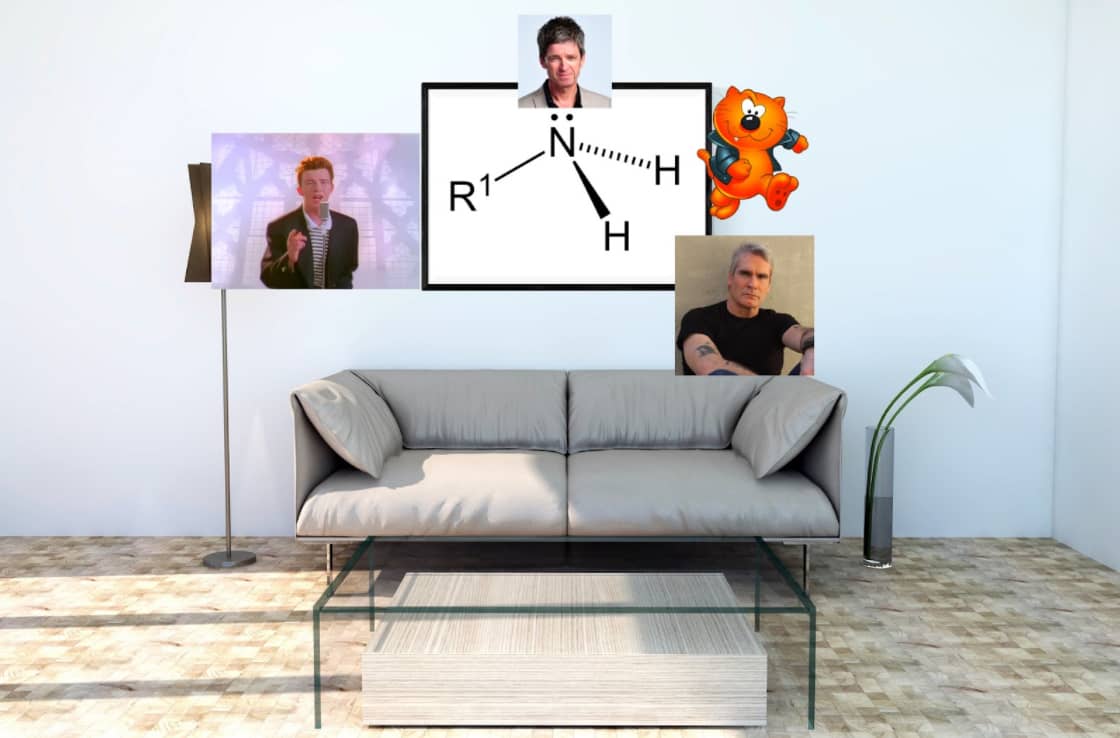
Here Rick Astley serves for the R, Noel Gallagher for the N, Heathcliffe the cat for one H, and Henry Rollins for the other.
Of course, you might not be aware of all or any of these pop culture figures. But you almost certainly can come up with your own associations. If you build an Alphabet List for yourself using the pegword method, you’ll never be at a loss for associations.
The same approach works well if you need to memorize the periodic table of the elements.
Step Three: Learn how to Memorize Numbers
In the primary amine above, we have the number one. To remember that, you can add a candle to the image. So that it’s linked to the R, create a story that helps you remember that your association was using a candle.
You can create a simple association for each number from 0-9, such as:
- 0 = donut
- 1 = candle
- 2 = swan
- 3 = mustache (on its side)
- 4 = sailboat
- 5 = seahorse
- 6 = fishing hook
- 7 = boomerang
- 8 = snowman
- 9 = golf club
For a more advanced number system, learn the Major System and a PAO System.
Step Four: Learn to Memorize Symbols
Chemists use lines and Lewis dots to help express the amount of chemical bonds that might be present.
Some people may find this the hardest of all because it involves figural memory.
However, let’s break it down. A lot of it is quite logical.
For example, if no bond is present, you might see:
If two bonds are present, you’ll see two parallel lines between two connected atoms. Like this:
Triple bonds are a little different, but where there are three lines, you can pretty much be sure that’s the kind of bond you’re looking at.
To remember these details, you can mentally draw the lines in your Memory Palace. Or you can attach one of your number-images in a way that makes sense to you.
Step Five: Bring Everything Together
Once you’ve got things you need to memorize in a Memory Palace, like n double bond o and any associated numbers and symbols you need, the next step is easy.
Simply review the material using the principles of active recall. This means that you challenge yourself to essentially solve a puzzle.
You’ve layered the information about functional groups you want to remember in a Memory Palace.
Now, instead of using boring rote learning to expose yourself endlessly to the information, you form memory connections faster through a slight challenge that uses creative repetition.
Remembering Functional Groups Fast
Now, you might be looking at all the steps above and be wondering…
“How the heck is all of this supposed to happen quickly?”
I understand your doubt. And if you feel like you lack the concentration needed to use these techniques, I’ve been there.
Getting started is the key.
And the reality is that I’ve seen people pick up memory techniques in an afternoon and give a memory expert with two Guinness records a run for his money.
You can too. You just need to set two or three afternoons aside to learn the techniques.
Here’s a free course that will give you all the foundations you need:
Once you have the core skills, everything will be much easier and even fun. That’s because creative repetition makes everything like a game.
And if you have any questions along the way, just shout out. I love to encourage learners who are serious about using memory techniques to reach their goals.
So what do you say?
Are you ready to master functional groups, whizz your exams and enjoy the career of your dreams?
Related Posts
- Can You Memorize Books Page By Page Without Using Memory Techniques?
The answer? Probably not.
- How To Use Memory Techniques At The Grocery Store
Check out these quick tips for practicing memory techniques at the grocery store. You'll learn…
- What If You Could Memorize Just One Word Continued
Here are some of the submissions I received when I asked people what if they…

